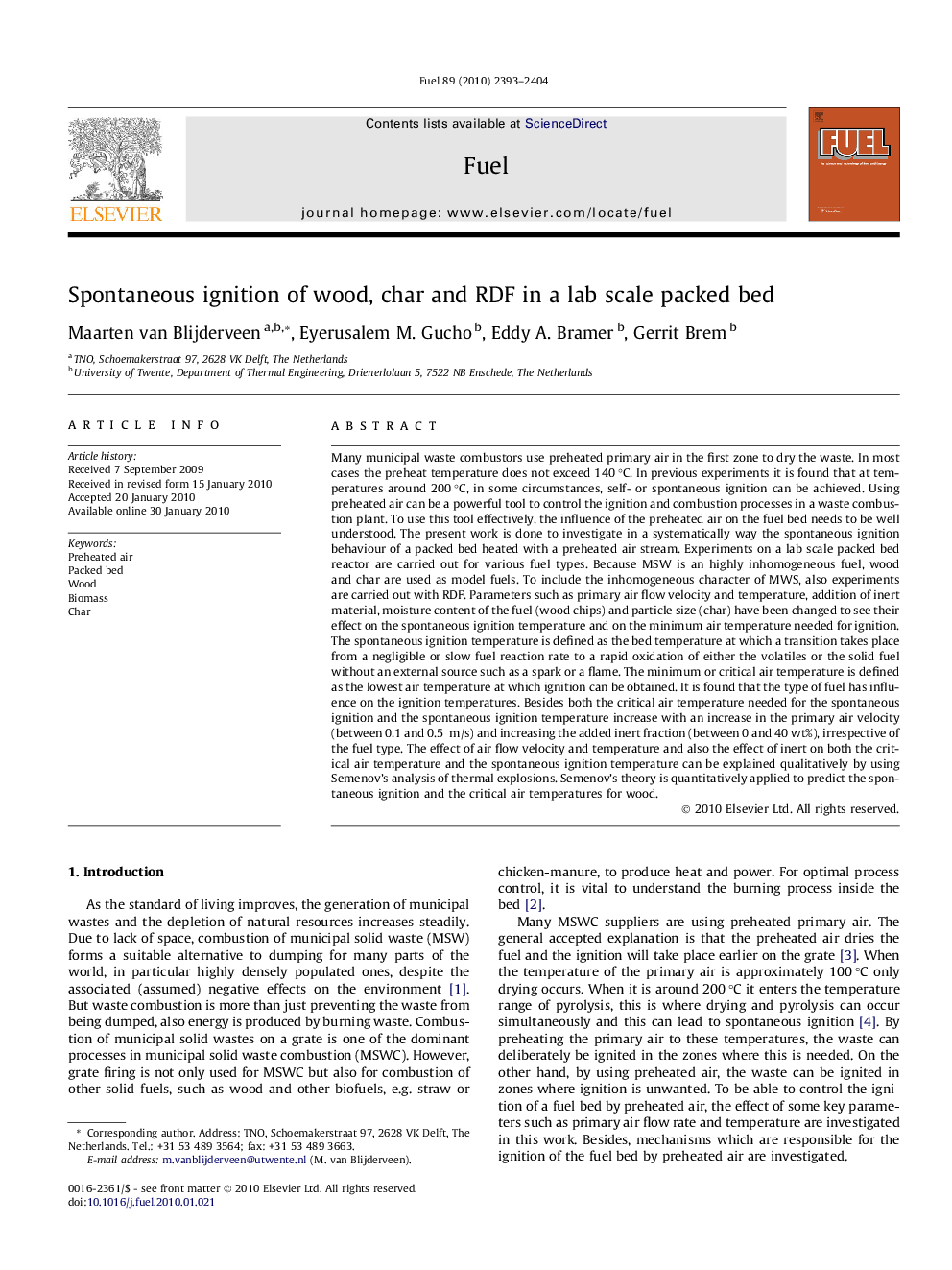| کد مقاله | کد نشریه | سال انتشار | مقاله انگلیسی | نسخه تمام متن |
|---|---|---|---|---|
| 207069 | 461206 | 2010 | 12 صفحه PDF | دانلود رایگان |

Many municipal waste combustors use preheated primary air in the first zone to dry the waste. In most cases the preheat temperature does not exceed 140 °C. In previous experiments it is found that at temperatures around 200 °C, in some circumstances, self- or spontaneous ignition can be achieved. Using preheated air can be a powerful tool to control the ignition and combustion processes in a waste combustion plant. To use this tool effectively, the influence of the preheated air on the fuel bed needs to be well understood. The present work is done to investigate in a systematically way the spontaneous ignition behaviour of a packed bed heated with a preheated air stream. Experiments on a lab scale packed bed reactor are carried out for various fuel types. Because MSW is an highly inhomogeneous fuel, wood and char are used as model fuels. To include the inhomogeneous character of MWS, also experiments are carried out with RDF. Parameters such as primary air flow velocity and temperature, addition of inert material, moisture content of the fuel (wood chips) and particle size (char) have been changed to see their effect on the spontaneous ignition temperature and on the minimum air temperature needed for ignition. The spontaneous ignition temperature is defined as the bed temperature at which a transition takes place from a negligible or slow fuel reaction rate to a rapid oxidation of either the volatiles or the solid fuel without an external source such as a spark or a flame. The minimum or critical air temperature is defined as the lowest air temperature at which ignition can be obtained. It is found that the type of fuel has influence on the ignition temperatures. Besides both the critical air temperature needed for the spontaneous ignition and the spontaneous ignition temperature increase with an increase in the primary air velocity (between 0.1 and 0.5 m/s) and increasing the added inert fraction (between 0 and 40 wt%), irrespective of the fuel type. The effect of air flow velocity and temperature and also the effect of inert on both the critical air temperature and the spontaneous ignition temperature can be explained qualitatively by using Semenov’s analysis of thermal explosions. Semenov’s theory is quantitatively applied to predict the spontaneous ignition and the critical air temperatures for wood.
Journal: Fuel - Volume 89, Issue 9, September 2010, Pages 2393–2404